#Outdoor learning
Explore tagged Tumblr posts
Text
10 Educational Activities for Toddlers: Making Learning Fun
Photo by Brett Sayles on Pexels.com Ladies and gentlemen, boys and girls, gather ’round! Prepare to embark on a wildly entertaining journey into the world of education for the tiniest scholars. We present to you, with a dash of humor and a sprinkle of silliness, the top 10 educational activities for toddlers that will have them giggling their way to knowledge! Sensory Play: Get ready to squish,…

View On WordPress
#art and crafts#childhood education#cooking#counting games#creativity#developmental milestones#early learning#educational activities#fine motor skills#Imagination#mathematics#music and movement#nature walks#outdoor learning#problem-solving#puzzles#sensory exploration#sensory play#storytelling#toddlers
7 notes
·
View notes
Text
The Perfect Balance of Fun and Learning on a Family Adventure Holiday
With families being so busy in today’s hectic world, they’re always looking for ways to spend quality time together while creating real-life experiences. A family adventure holiday is the perfect solution since it offers excellent excitement and entertainment while opening the doors for learning and personal development. These holidays allow bonding between family members to grow together in…
#adventure activities#adventure vacation#educational experiences#experiential education#family adventure holiday#Family Bonding#Family Travel#family-friendly destinations#Fun Learning Activities#hands-on learning#holiday destination#interactive adventures#Learning Through Play#Outdoor Exploration#Outdoor Learning
0 notes
Text


Our students don't only learn in the classroom but also learn outside at local sites like the Boston Commons or Public Gardens!
Come join us and learn about the beautiful sites of Boston!
More Questions? Feel free to Contact Us at [email protected]
#boston#esl#english language learning#esol#learn english#massachusetts#boston common#boston massachusetts#english#english language#outdoor learning#boston public garden#english language school#language school#study english
0 notes
Text
Celebrating the Success of National Forest Week: Together for Our Green Spaces
🗣️ An inspiring presentation by Dr. Eric Lamb on invasive grasses and biodiversity! With a special Presentation by Anna, and introduction by Srichand🌾��📚 Engaging educational field trips to the Richard St. Barbe Baker Afforestation Area with thanks to TD Parks People and ParticipACTION! 🌍📖🎌 Our heartfelt Proclamation and Flag Raising Ceremony to honor our commitment to nature! 🌿🌈Together, we…

View On WordPress
#afforestation#air quality#biodiversity#Canada#Community Engagement#Conservation Efforts#Dr. Eric Lamb#ecological health#Educational Programs#environment#Environmental Education#Environmental Protection#flag raising#forests#Friends of the Saskatoon Afforestation Areas#George Genereux Afforestation Area#George Genereux Urban REgional Park#green initiatives#habitat conservation#Invasive Species#National Forest Week#natural beauty#Nature#nature appreciation#Nature Connection#outdoor learning#proclamation ceremony#Public Awareness#recreation#Richard St. Barbe Baker
0 notes
Text
Finding quality daycare in New York City, New York can be a daunting task for parents. At My Little Stars Child Care, we believe that learning should go beyond the four walls of a classroom. Our outdoor activities are designed not just for fun, but also to enhance learning and development in young children. From nature walks to sensory play, we provide a balanced approach to early education that fosters curiosity and social skills.
0 notes
Text
To Celebrate 13 years of supporting schools and colleges
13% DISCOUNT until the end of the year.
We will offer a 13% DISCOUNT on all our products until the end of the year. Simply visit the website choose your product and email [email protected] with the subject line 13% Discount

View On WordPress
#Classroom#Collaboration#computational thinking#Early Years Foundation Stage#Education#Game based learning#Outdoor Learning#Problem solving#STEM#Technology
0 notes
Text
youtube
#outdoor education#outdoor parenting ideas#outdoor parenting tips#family safety#parenting tips#parenting advice#outdoor exploration#outdoor adventures#outdoor parenting#outdoor activities#outdoor learning#outdoor safety#safety tips#child safety#children's safety#parenting hacks#safety for kids#kids safety#outdoor play#outdoor fun#Youtube
1 note
·
View note
Text
If you’re a parent seeking the ideal summer camp experience for your child, you might be interested in the unique opportunities offered by STEM-focused camps. Let’s delve into how a summer camp focused on STEM education in Alpharetta, Georgia can be a transformative experience for your child, both academically and socially.
0 notes
Text
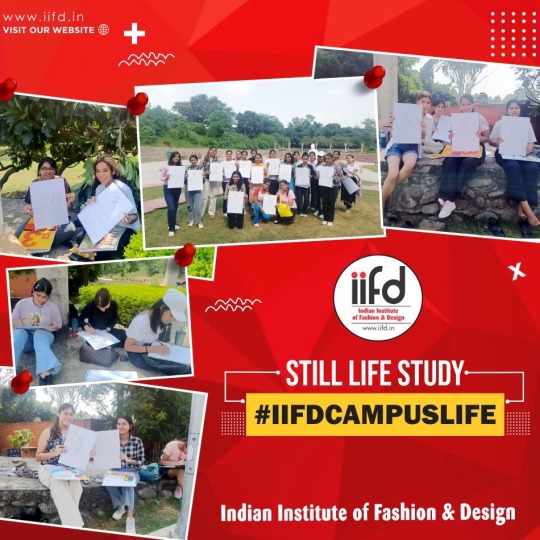
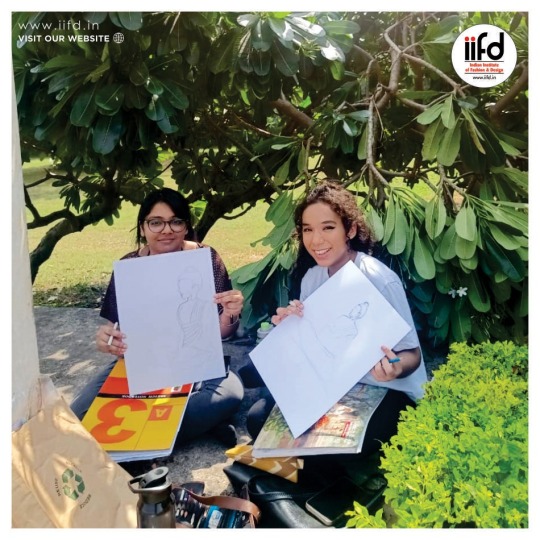








Outdoor study
Breathing life into art with every stroke!
Our talented IIFDians are on an outdoor study session, capturing the beauty of nature through captivating still-life sketching. Stay tuned to witness their artistic journey unfold!
#outdoor study#outdoor studies#outdoor learning#fashion design students#iifd#iifd chandigarh#fashion design education#fashion#Chandigarh#sketching
0 notes
Link
0 notes
Text

the heaven and earth siblings
#i think im finally happy with how luckys design turned out.. extremely chill skateboard dude who can only do ollies half the time#i might add on to this post.. i havent drawn my ocs in a while#since the front part of augustas hair is meant to resemble a star i wanted lucky to match#the hair growing from his hair whorl is shaped like a four leaf clover which is where his nickname comes from#i dont think ive mentioned a lot abt him anywhere bc i cant vividly imagine what kind of person he is#but i like to think hes good natured and amiable to the point where hes easy to get along with but also a little too willing to go#along with things to avoid upsetting others. hes really familiar with the outdoors and learns best by doing things hands on#theyre both very curious and have a similar way of thinking so they can read each other extremely well#my art#myart#my oc#oc#augusta#lucky#doodles
125 notes
·
View notes
Text
Cultivating Curiosity: How Gardening with Safe Plants Teaches Children Responsibility and Science Basics
Gardening is an engaging hands-on activity that offers more than the beauty of flowers and the bounty of fruits and vegetables. It serves as an invaluable practical classroom, teaching children responsibility, science, ecology, and the natural world through hands-on experience with safe plants. Gardening helps children learn essential life skills and scientific principles through direct…
#cultivating curiosity#gardening children#kids gardening#Learning#Outdoor Activities#Outdoor Learning#safe plants#science basics#teaching responsibility
0 notes
Text
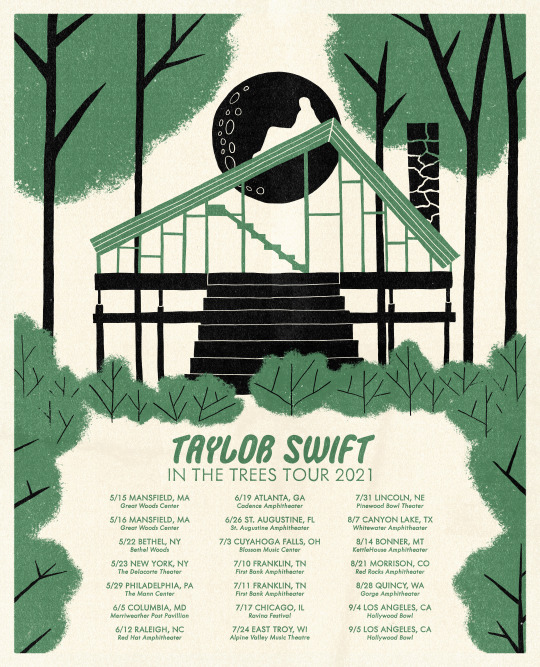
Taylor Swift - In The Trees Tour (If Folklore went on tour)
The summer after her blockbuster indie-folk double album, Taylor Swift embarks on a tour befitting of the acoustic tales Folklore and Evermore weave. All outdoor venues in forests and parks and canyons across America, some of the most iconic stages once helmed by the greatest storytellers to ever pick up a guitar. Among others, Red Rocks, The Hollywood Bowl, the infamous Woodstock grounds, and one intimate night in Central Park beneath the stars. Folklore and Evermore come to life from the steps of a traveling mid-century cabin, where Taylor can gaze out upon her audience each night, nestled among verdant trees, sprawled out on grassy lawns, or cradled by the mountains. Buy tickets now to the concert of the summer and experience Folklore and Evermore as Taylor herself wishes to be pictured; In The Trees.
#taylor swift#folklore#evermore#eras tour#i loved planning this and i would have LOVED attending it#i KNOWWWWW the delacourte is way too small but i couldn't resist#and i KNOWWW most of these venues are too small but in my defense#she had 4 shows total planned in the US for lover so#her anticipated audience was much smaller then#anyway what a DREEEAM to listen to taylor outside with the breeze blowing and grass beneath my feet#it was also really fun learning about all the lesser known outdoor venues across the country#DYING to go to the washington one#don't yell at me for not doing enough nights at a certain place ok i'm not a tour manager#mine
38 notes
·
View notes
Text

Tidepool maze illustration, from Nature Smarts Workbook: All about Water (Ages 4-6), Mass Audubon and Storey Publishing . Out May 21st!
#tide pool#activity book#nature smarts#kids activity#outdoor activity#outdoor activities#activities#book#kid's book#kids book#children's book#ages 4-6#learning#educational#illustration#audubon#mass audubon#sea life#marine life#rocky coast#maine#new england#atlantic#naturalist#nature#wildlife#jada fitch#illustrator
73 notes
·
View notes
Text
Supporting Your Plants for Cheap
This is my fifth post in a series I'll be making on how to increase biodiversity on a budget! I’m not an expert--just an enthusiast--but I hope something you find here helps!
Once you start gardening, you’ll find a lot of things go into it, and it can be a bit daunting to think about--especially if you’re trying to keep things low-cost. Fortunately, it doesn’t have to be as hard--or as expensive--as it initially appears.
Composting
There’s several different ways to compost, any of which are helpful indirecting food waste and nutrients out of landfills and into your soil--which in and of itself can help increase biodiversity by making the space more livable for microorganisms and insects, which then cycles around to the rest of the habitat.
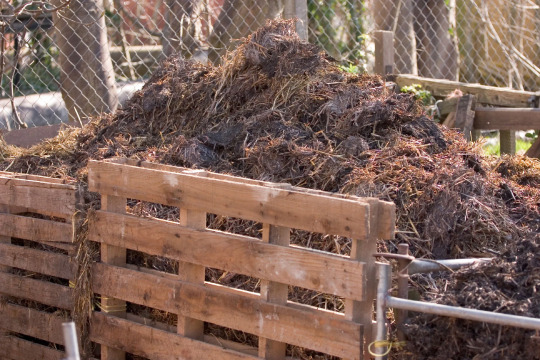
The classic one you see is hot composting. Most of the time, when I see hot composting set ups online, or hear people talking about them, it’s like listening to a wizard cast an intricate spell and prattle on about ratios and temperatures and special ingredients while standing over a detailed self-built setup made of the finest wood money can buy. Fortunately, it doesn’t have to be complicated. First off, there’s lots of ways to make compost bins--some can be more expensive than others, but there’s definitely options asides from buying pre-made tumblers or getting an engineering degree. I’ve seen people use metal trash cans dug into the ground, make compost pile setups out of old pallets, or just pile stuff up and leave it. While using different ratios of certain items can help them decompose faster, it’s ultimately not something you need to worry about a lot. If it can break down, it’ll break down--it just might take awhile. Composting this way can also help provide habitat--some insects like bumblebees have been known to make nests in compost heaps. In addition, it provides a robust ecosystem for decomposers like worms and other organisms, and bats and birds will be attracted to open-top piles to eat flying bugs that live off the compost. Amphibians enjoy them for humidity, warmth, and feasting on insects. Do note that sometimes snakes may also rest in and lay eggs in compost heaps, so be careful when turning them.
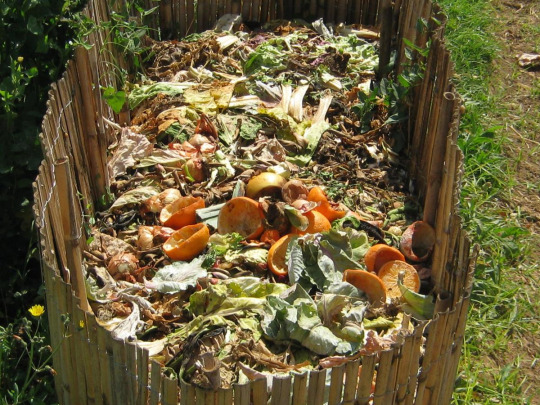
Do note, though, that if your compost pile looks like that you're getting roaches and rats and raccoons out of your goddamn mind. Bury the food scraps.
Personally, when I compost, I use a worm bin--they’re a fantastic option for limited space and limiting smells. I keep mine outside in a big rubbermaid tote with holes drilled into the bottom, sides, and lid. I put a layer or two of weed block on the inside, so it’s still able to drain but keeps the worms from trying to escape during rainy days. There is an initial cost of buying the worms, getting enough bedding materials, and getting a new bin if you don’t have an old one suitable for use. But with occasional feeding, it should sustain itself and provide valuable worm castings that can be used in the garden. Please do note, however, that earthworms are considered invasive in some places.

Look at that worm bin-y goodness. This is a pic of my bin, from earlier this month!
Though I’ve never done it, I’ve heard of people having good results with bokashi composting--a method that’s done in a bucket, and is relatively easy to do indoors.

Once you start a composting system, keeping it stockpiled with organic material can become pretty easy for cheap. In general, if it comes from a plant, it’s safe to use. It’s also a good idea to avoid putting already-cooked things in a pile, as salts and sauces can kill beneficial bacteria in the compost while also attracting animals. Adding meat is also generally avoided to not attract animals. But below are some things that I’ve put in my worm bin quick, easy, and cheaply; or things I’ve seen friends put in their compost piles.
Cooking scraps/snack leftovers--things like cut up bell peppers, the ends of tomatoes, strawberry tops, apple cores, watermelon rinds, coffee grounds, and orange peels are amassed somewhat quickly in my house--my dad likes to cook. Around holidays like Thanksgiving and Christmas? Corn husks, potato peels, sweet potato fibers, leftover greens and other trimmings are a feast for compost piles and worm bins.
Vegetables and Stuff that went bad in the fridge/pantry--we’re constantly victims of the ‘forgot it was there’ conundrum. Fridge cleanouts are great times to decide what can be tossed to the compost--moldy bell peppers, spotty celery, questionable carrots, onion halves, old eggs, bagged salads, and stale/moldy bread have all been tossed into the pile before!
Grass clippings--though my worms don’t like grass clippings, they’re still great material for a classic hot compost set-up!
Fallen leaves--another classic addition to a hot compost pile. Some friends keep them stocked up and stored for later use.
Plant trimmings--what is plant clean up if not compost material? I’ve put cleaned-out sunflower heads and stalks in my worm bin, and they decomposed after about two months. If you get blossom end rot on your tomatoes or peppers, they’re still fair game for the bin as well!
Shredded mail--just make sure to not put in the thin plastic that covers the address section on some envelopes. Otherwise? As long as the paper isn’t glossy, it should be great for a bin or pile! Shredded paper or cardboard also makes great bedding for worm bins. Put those Amazon boxes to good use!
Pumpkins! Snag your neighbor’s halloween pumpkins in November and toss them in my compost! Last year my dad went around the cul-de-sac and nabbed all of the post-halloween pumpkins, the worms loved it.
Christmas tree needles--can’t confirm I’ve tried this, but it seems like it would work.
Mulch
Mulch is an excellent way to keep your soil moist, while also beginning and continuing to improve soil conditions as it breaks down into organic matter. You’ll have to water less, and it’ll prevent/slow down the growth of unwanted weeds (which is always the final straw to gardening for me, I get so overwhelmed I just stop going outside). Win-win situation, right? Except stepping into a Home Depot and finding mulch being sold for five dollars per square foot and knowing you have to cover a whole garden with it all can add up… pretty quickly, to say the least.

Fortunately, there are a few solutions to this, and likely from your own backyard!
Grass clippings are the first that come to mind. If you’re mowing your lawn, or have neighbors who are, collecting the clippings and spreading them over your soil is a cheap and easy option for some quick mulch. It’ll be very nitrogen-heavy, so keep that in mind, but it’ll still prevent weeds, retain moisture, and break down into organic material over the course of a few months. Do try to not use grass clippings you know are treated with pesticides, since the aim is to use this mulch to help increase your biodiversity, and having insects around plays a big role in that.

Fallen leaves are the next that comes to mind. If you’ve got a tree in your yard, or in your neighborhood, then you or someone around you knows the neverending avalanche of leaves or pine needles that drop come fall. As mentioned before, they can be used to make brush piles for creatures, or added into compost, but they have a fantastic third use as mulch. Add them on top of your beds!
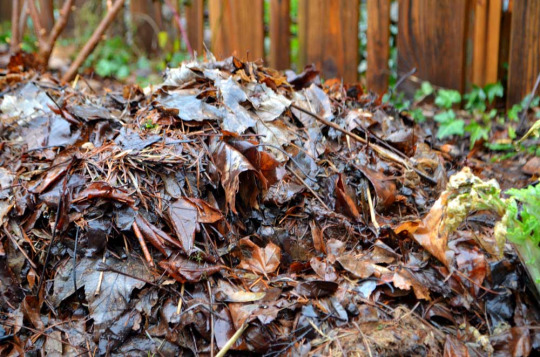
Want free wood mulch? A program called Chip Drop might be the best solution for you! They team up with arborists to find cheap drop sites for shredded wood, logs, etc. that are produced as they maintain trees! If any local arborists tied to the program are operating in your area, instead of paying to dump the resulting mulch at a landfill or some other dumpside, they’ll simply dump it at your place! Now, you won’t be able to control when the mulch gets dropped--I’ve heard of people coming home from work one day to find a chip drop in their driveway. But… free mulch!
Want wood chips but not a whole truck load? If an arborist is working in your area, and you can muster the courage, its worth a shot to ask! One time someone in my neighborhood was getting a tree removed, so my Dad and I parked near their car with a tarp in the trunk, some shovels, and an old storage bin. We approached nicely and asked if we could have some chips, and they were totally cool with it! At that point, how much you get depends on how big your trunk space is, and how many times you’re willing to ferry mulch back and forth out of your car so you can go back for more. But it is an option! Alternatively, you can ask them to dump the whole load in front of your house, but at least you’ll know when and where it’s happening!
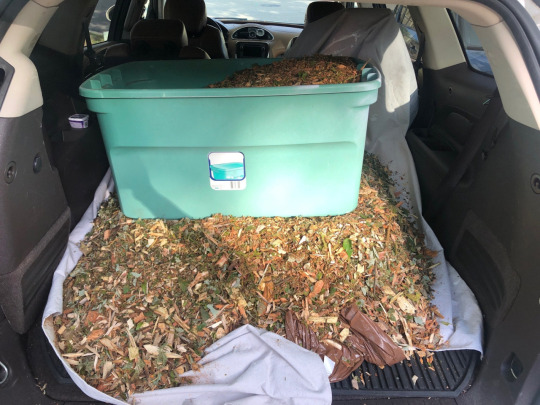
Trellises
Many plants need, or will appreciate, some kind of climbing structure. But trellises aren’t often cheap to find. To that, I say--we’ll create our own!

One popular option is to grow taller plants, and then plant climbing species are few weeks/years later so they’ll climb the taller plants! I’ve planted passion vine near a tree in my garden for it to climb, and I’ve seen people do similar concepts with sunflowers, corn, and other such plants! Sunflower stalks can provide support even after they’ve been cut back.
A combination of wood, some stakes, some nails, and some string can create a great frame trellis that can be used for beans, tomatoes, vines, etc--so I’m sure if could be put to good use for native climbers, especially since my dad’s used this structure for passion vines before. You may have to replace the string every year, but most of the time, the string is compostable anyways!
This may take a bit more setup and have a more upfront cost, but creating a trellis out of cattle panels makes a durable structure that can support all kinds of vining plants!
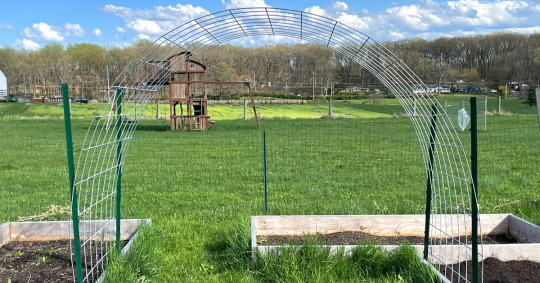
Of course, there’s always the easy alternative of simply letting plants climb along your fence! This is especially easy if you have a chain link fence, but wooden fences are plenty suitable for some species as well! I’ve seen passion vines do great growing along chain link fences as supports, and one of my favorite sights as a kid was always seeing bushels of trumpet vines growing up and over fences on the drive home.
Why are we worrying about trellises? Creatures are attracted to diverse landscapes with a variety of plants within them, so having a few climbers can be a great way to attract more wildlife! I know some plants in my area that pollinators are attracted to, or even rely on as host plants, are climbers that can get upwards of 15 feet tall, and will climb any surface you give them. A trellis provides you a great place to put extremely beneficial plants.
That's the end of this post! My next post is gonna be about how different 'kinds' of plants can all be beneficial in a biodiversity standpoint. Until then, I hope this advice was helpful! Feel free to reply with any questions, your success stories, or anything you think I may have forgotten to add in!
#biodiversity#solarpunk#gardening#outdoor gardening#composting#mulch#trellis#budget gardening#cheap gardening#ani rambles#out of queue#the biodiversity saga#i remember junior year of college me and my friends considered doing a cattle panel trellis#but then we couldn't figure out where to buy cattle panel#apparently the answer is 'tractor/farmer supply companies'#also so anyone reading these tags knows what took me 5+ years to learn#CATTLE PANEL DOESNT COME IN ROLLS IT COMES IN LENGTHS#all this time I was like 'man i wanna make a cattle panel trellis but it comes in like 40 foot lengths and i dont need that much'#and all my gardening homies were confused because theyve been getting it in lengths THIS WHOLE TIME#I WAS LOOKING AT FUCKIN ROLLED FENCING#i actually dont think any of the big box stores by me even fuckin sell cattle panel but thats beside the point#you can get it delivered though#(Delivered to the store for pickup i think)#someday i want a cattle panel trellis with like moonflowers or trumpet vine just a BURST of color and life
312 notes
·
View notes
Text

Saturday afternoon around a campfire for these Lyman Ward Military Academy cadets.
Alabama
1982
#vintage camping#campfire light#alabama#lyman ward military academy#cadets#history#camping#outdoors#learning#1980s
106 notes
·
View notes